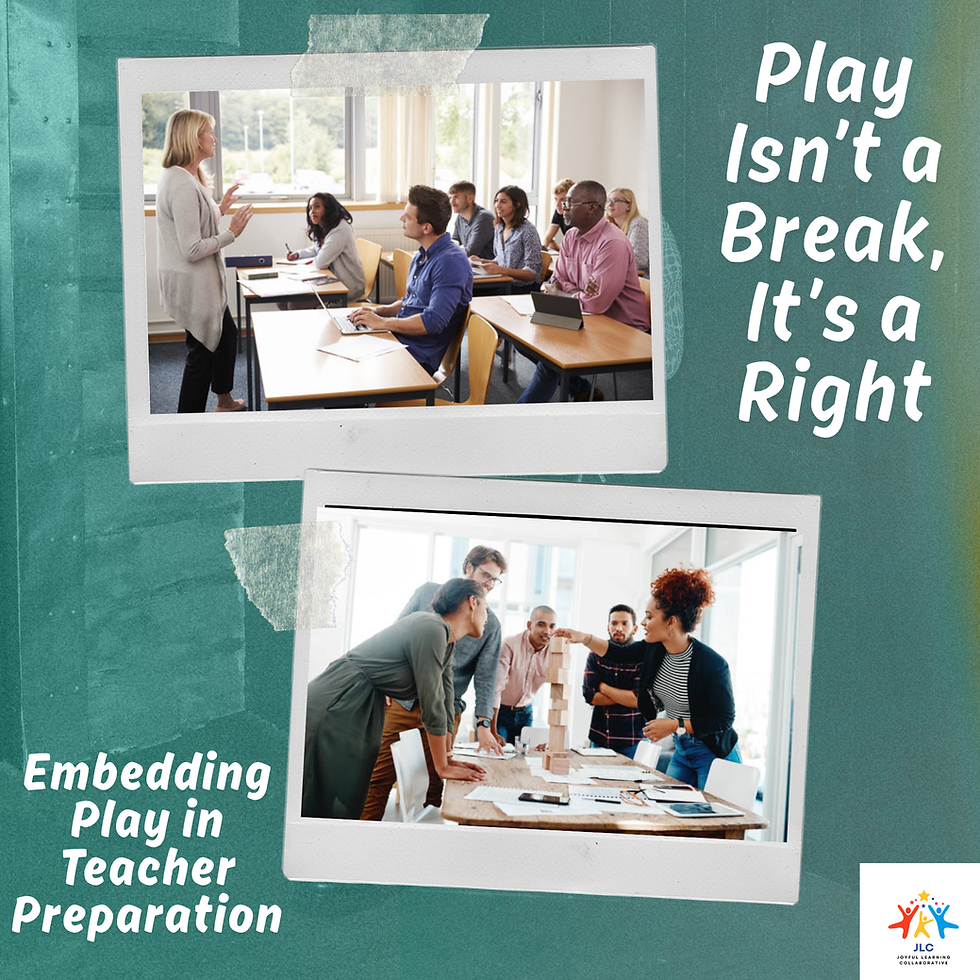From Preschool to Professors: Lessons in Joy
- Johna Wright

- Oct 13
- 3 min read

When I think about joyful learning, my mind immediately flashes to scenes from early childhood classrooms: the laughter around a sensory table, the hum of discovery during block play, the way curiosity is treated as sacred. Then I picture a college lecture hall: fluorescent lights, rows of laptops, and students quietly trying to keep up. Somewhere between preschool and higher education, joy gets lost – and for students with disabilities, that loss can feel especially sharp.
As a blind and autistic professor teaching writing and global disability studies, I see this disconnect daily. Higher education often confuses accommodation with inclusion. Access opens the door, but it doesn’t guarantee belonging. My own journey, from being told that blindness would “limit” me to now mentoring students through teaching and advising, has shown me that inclusion without joy is still exclusion in disguise.
Early childhood educators design for curiosity, collaboration, and play because they know these elements drive learning and development. Research confirms that playful engagement builds executive function, creativity, and empathy across the lifespan. Yet in higher education, we often design for compliance–deadlines, rubrics, rigid expectations–and then retrofit accessibility afterward. What if we flipped that script and built joyful access in from the start?
From Blocks to Belonging
The same principles that guide early childhood play–choice, creativity, and agency–can and should shape higher education. In preschool, children are offered multiple ways to show understanding: they can build, draw, or tell a story. That was Universal Design for Learning in action long before it had a name. College students with disabilities deserve that same freedom to express what they know.
In my classes, students choose their final project format: a paper, a podcast, or a visual campaign about disability inclusion. One disabled student told me, “I never knew I could learn this much until I actually had fun doing it.” Their project wasn’t just accessible—it was joyful. And that joy deepened their learning in ways no rubric alone could. When assignments become “quests” or “missions,” rather than boxes to check, students shift from compliance to curiosity. Play reawakens the intrinsic motivation that drives all meaningful learning.
Rethinking Rigor
In a sandbox, boundaries create safety, but within those boundaries, creativity thrives. Higher education needs more sandboxes. We’ve mistaken rigor for rigid for too long, when real rigor lies in depth, not dryness.
At ABLE Mercer, the peer mentoring and advocacy organization I founded for disabled students, our most meaningful leadership trainings happen when students are laughing, experimenting, and designing together, not memorizing policies. Joy isn’t the opposite of rigor; it’s what makes rigor sustainable. In other words, joyful engagement enhances attention, memory, and persistence.
Building Community
Early childhood teachers understand that learning happens best in communities of care: in shared songs, storytelling, and helping hands. At the Joyful Learning Collaborative, we believe play is not just for preschool–it’s a pathway to equity at every level of learning. The same joyful learning principles that drive early childhood classrooms can guide higher education toward more inclusive, compassionate spaces.
In my teaching and advising, I try to recreate that spirit: beginning advising meetings with creative role-play, ending seminars with reflective storytelling games, or letting students co-design accessibility solutions. These small moments build trust and belonging, just as play circles do for preschoolers.
Play in higher education isn’t a luxury; it’s a form of equity. When we make space for curiosity and joy, we send a powerful message to students with disabilities: You don’t have to reshape yourself to fit the system; the system can reshape itself to fit you.


Comments